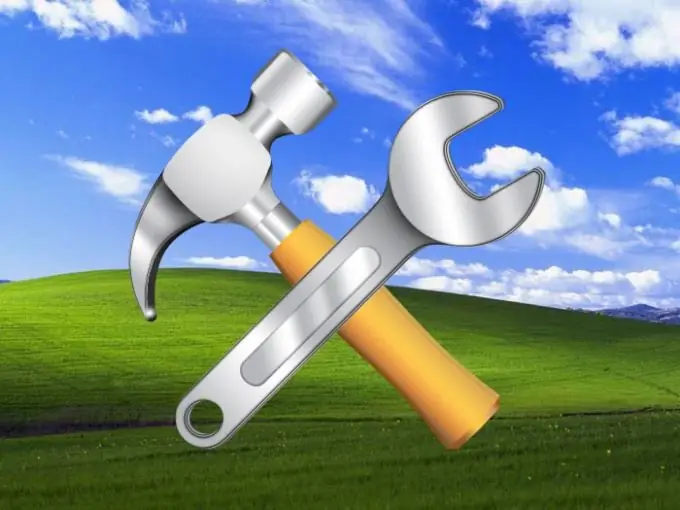Through the "Start" button, placed on the toolbar of the Windows desktop, the system can enter the main OS menu. It is used to access applications and utilities installed on the computer, search and help systems, shutdown and restart options. If the button for accessing all these functions is not displayed in the graphical interface of the system, then working with it will be seriously complicated.

Instructions
Step 1
Make sure that the function of its automatic hiding is not activated in the settings of the taskbar. If the corresponding option is enabled, the "Start" button will appear only when you move the cursor to the edge of the screen along which the taskbar is located. Press the WIN key - if the main menu opens and the "Start" button appears along with the taskbar, then this is exactly the reason. Right-click the panel, select Properties from the menu, uncheck the Automatically hide taskbar check box, and click OK.
Step 2
If the main menu opens when you press the WIN key, but neither the Start button nor the taskbar appears, this means that the width of the taskbar has been reduced to an extremely small value. Look for a narrow, 1-pixel strip along one side of the screen - this is the taskbar. With the mouse cursor over it, press the left button and move the border of the taskbar towards the center of the screen to the desired width.
Step 3
If, in addition to the Start button, there are no shortcuts on the desktop, and pressing the WIN key does not open the main menu, then this is a sign of the inoperability of the OS component responsible for the operation of a significant part of the system's graphical interface functions - Windows Explorer. Try restarting it using the Task Manager. To open it press CTRL + alt="Image" + Delete.
Step 4
Look for explorer.exe in the Image name column on the Processes tab - if it is there, it means that the program is frozen and must be closed forcibly. Right-click explorer.exe and select End Process from the drop-down context menu.
Step 5
Go to the Applications tab and click the button labeled New Task. The "Create a new task" dialog box will open, in the input field of which you need to type the explorer command and click the "OK" button. As a result, Windows Explorer should start and return to its original place the "Start" button.
Step 6
If you cannot restore the display of the "Start" button in this way, you should contact the specialists in anti-virus protection of your computer - apparently, as a result of a virus attack, the executable system file explorer.exe was damaged. A specialist must help identify the virus, neutralize and eliminate the consequences of its activity - they may not be limited to damage to one file.






